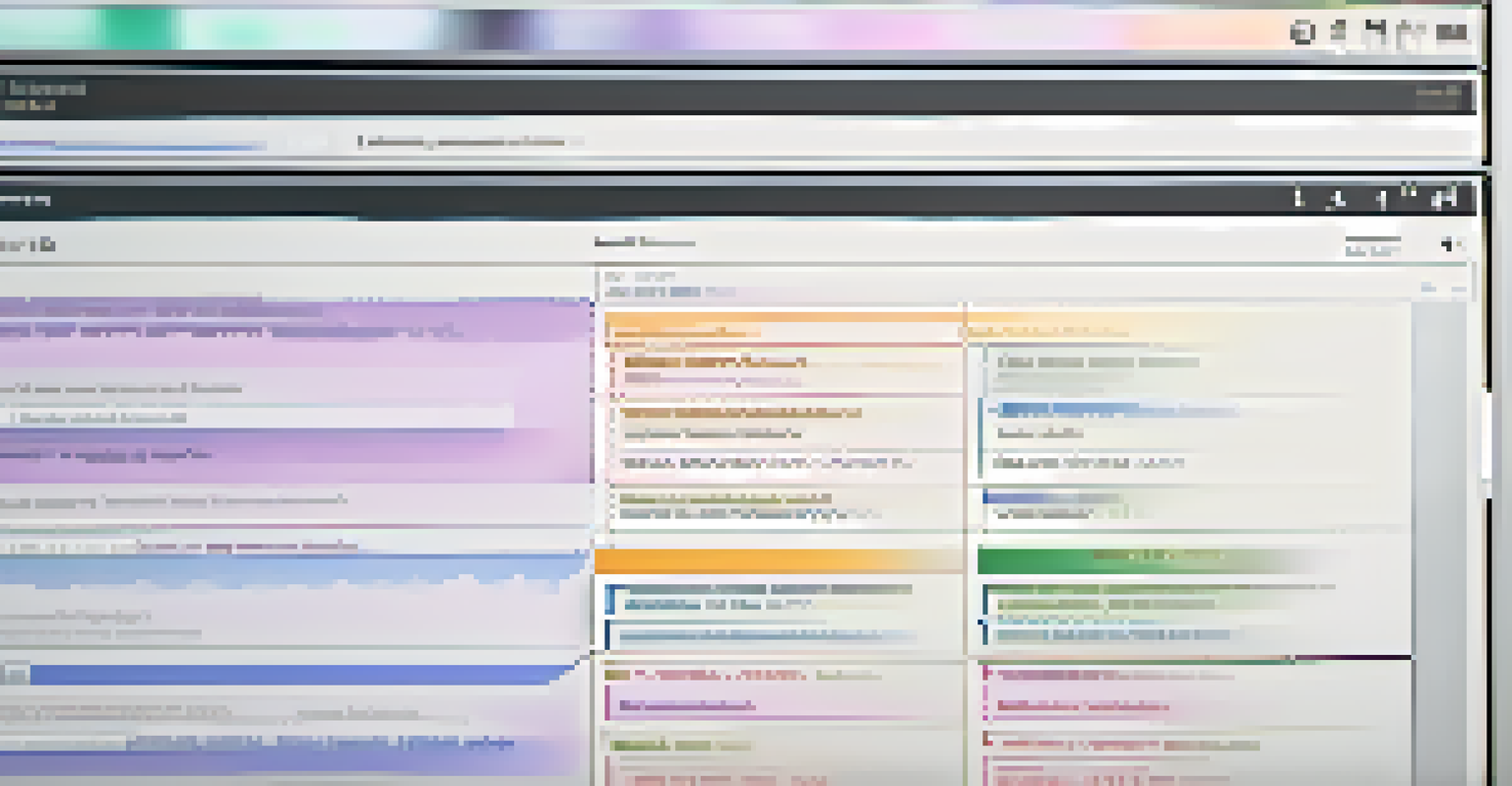The Role of Metadata in Digital Asset Management Solutions

What is Metadata and Why It Matters
Metadata is often described as data about data. It provides essential information that helps categorize and contextualize digital assets, making them easier to locate and manage. For instance, think of a library: just as books have titles, authors, and genres, digital files use metadata to convey similar details.
Metadata is the key to unlocking the potential of data, helping us to understand and utilize it effectively.
Without metadata, a vast repository of images or documents can quickly become chaotic. Imagine trying to find a specific photo from years of vacation snaps without any labeling! Metadata makes this process seamless by allowing users to filter and search efficiently.
Furthermore, metadata supports effective asset management by enabling organizations to track usage and versioning. This means you can see who accessed a file, when it was last modified, and ensure everyone is using the most current version.
Types of Metadata in Digital Asset Management
Metadata can be classified into several types, each serving a unique purpose. Descriptive metadata, for instance, helps identify a file's content and context, like titles and keywords. This type makes it easier for users to find what they need by simply searching with relevant terms.

Another type is structural metadata, which describes how different parts of a file relate to one another. Think of it as the blueprint of a digital asset, detailing how components like images, text, and videos are organized and interlinked.
Importance of Metadata for Search
Metadata enhances searchability, allowing users to quickly find relevant files through targeted searches.
Lastly, administrative metadata deals with management details such as file creation date, file type, and access rights. This type is crucial for maintaining the integrity and security of digital assets across an organization.
How Metadata Enhances Searchability
One of the standout benefits of metadata is its ability to enhance searchability. When metadata is properly utilized, it allows users to perform targeted searches, significantly reducing the time spent sifting through irrelevant files. For example, if you remember a keyword from a document, searching with that term can lead you directly to the asset.
Without metadata, we are lost in a sea of information, unable to find what we need amidst the chaos.
Moreover, metadata can help improve search engine optimization (SEO) for online assets. By including relevant keywords and descriptions in the metadata, businesses can enhance their visibility online, leading to increased traffic and engagement.
Overall, effective use of metadata transforms a digital asset management solution from a simple storage system into a powerful tool for finding and utilizing resources efficiently.
The Role of Metadata in Collaboration
In today's collaborative work environments, metadata plays a crucial role in facilitating teamwork. When multiple team members access the same digital assets, metadata ensures everyone is on the same page regarding file versions and updates. This is akin to having a group chat where everyone can see the latest changes in real-time.
Additionally, metadata helps define access permissions, ensuring that sensitive information is only available to authorized users. This not only fosters a collaborative spirit but also maintains security within the organization.
Types of Metadata Explained
Different types of metadata, including descriptive, structural, and administrative, each serve unique purposes in digital asset management.
By streamlining collaboration through effective metadata usage, teams can work more harmoniously, ultimately leading to increased productivity and better outcomes.
Challenges in Managing Metadata
While metadata offers numerous benefits, managing it can pose challenges. One significant issue is the inconsistency in metadata application across different teams or departments. Without a standardized approach, files may end up with varying levels of detail, making it tricky to locate assets later.
Another challenge is the potential for outdated or inaccurate metadata. If metadata is not regularly reviewed and updated, it can lead to confusion and inefficiency. Imagine trying to find an important document only to discover the metadata is incorrect or missing!
Addressing these challenges requires a proactive strategy, including regular audits and training for team members on best practices for metadata management.
Best Practices for Effective Metadata Management
To harness the full power of metadata, organizations should implement a set of best practices. First and foremost, creating a metadata template can ensure consistency across all digital assets. This template acts as a guideline, helping everyone understand what information needs to be included.
Secondly, investing in training for team members on the importance and usage of metadata can yield significant benefits. When everyone understands its value, they are more likely to apply it correctly and consistently.
Challenges in Metadata Management
Managing metadata can be challenging due to inconsistencies and outdated information, necessitating regular audits and training.
Lastly, regular audits of metadata should be conducted to ensure accuracy and relevance. By maintaining a fresh and relevant metadata structure, organizations can continuously optimize their digital asset management processes.
The Future of Metadata in Digital Asset Management
As technology evolves, so does the role of metadata in digital asset management solutions. Innovations like artificial intelligence and machine learning are beginning to automate metadata tagging, making it easier for organizations to manage their assets without manual intervention.
These advancements can lead to smarter systems that not only categorize assets but also predict user needs based on past behavior. For example, a system could suggest relevant files based on a user’s search history, enhancing overall accessibility.

Looking ahead, the integration of metadata with emerging technologies will likely revolutionize how businesses manage and utilize their digital assets, paving the way for more efficient and effective practices.